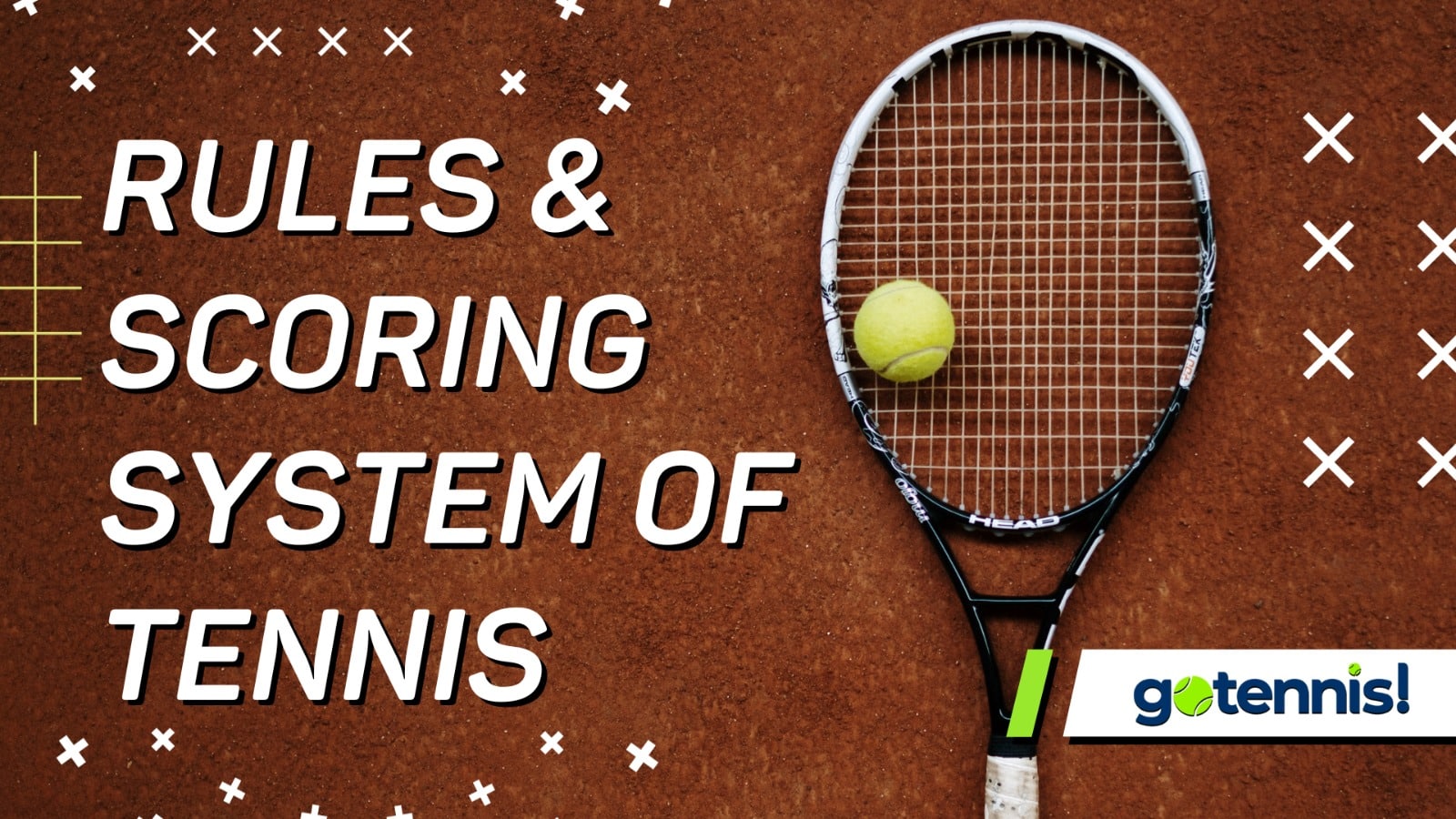Tennis is played on a court that is rectangular in design and can have a variety of surfaces. Either two players (singles match) or a total of four (doubles match) participate in the game. Using a stringed racquet, players stand on opposing sides of the court and whack the ball across the court to one another.
At its core, tennis is an incredibly easy sport with a lot of fun. At first, though, the scoring system may seem as though it was created by evil surrealists. In all likelihood, it was courtiers from mediaeval France. From initial serve to match point, this guide will assist you to get a proper understanding.
Understand the lines
When you walk down to the tennis court, you should notice a regular rectangle split in half by a net. If you wish to double check, the net should be three feet high in its center.
Your tennis court is appropriate for singles and doubles play if it is marked out with two lines that form a tramline appearance on its longer sides. Doubles players should play to the broadest lines, unless they are serving, in which case the court will use the singles lines. Singles players may simply disregard the outer set of lines. In addition to marking the baseline, which is where you stand to serve, a center line also separates the service areas into left and right.
Since the lines are seen as a part of the playing field in tennis, a ball that lands on one is considered to be “in”.
Getting Points
A single-point match in tennis ends when one player, or two players in doubles, is unable to play a valid return, which determines the opponent’s score. For a shot to be considered legal, it must cross over to the side of your rival without bouncing back onto your court, and then it must bounce or be hit by the opponent in their space. If you don’t meet those requirements, you forfeit the point.
If you intentionally hit the ball twice, you also loose. You also lose the point if you strike the ball with your racket while it’s not in your hand or against any area of your body. Both playing the ball on the other side of the net as well as sprinting into it cost you a point, unless the ball was blasted or spun over following landing on your side. In doubles, you lose a point if you hit the ball after your partner does.
As long as the ball finally crosses the net, it is permissible for it to strike it (apart from a serve). Shots that bounce lawfully in your opponent’s side of the court are permitted beneath the net cord, between the net supports and the net itself, as well as around the net post regardless of height.
Point counts regarding service
A serve initiates the game. A coin flip or the spin of a racket are typically used to determine who goes first. Tennis allows you to score regardless of whether you have the serve, unlike many other racquet sports. Serving requires both feet to be on the proper side of the court and behind the baseline. Begin on your right side and serve diagonally into the other side of the service box, crossing the centre line and the net.
If you’re having problems serving, you can go underhand; nevertheless, it’s polite to let your opponent know that you intend to do so. The serve does not need to be made with the ball in the air to be valid. You get another shot at serving and an opportunity to yell “let!” aloud if your serve finds its way into the net cord. A server loses a point for two unlawful serves after one valid serve.
Games, Sets, Matches and Points
In tennis, a game is won with four points, a set with six games, and a match with two or three sets. Although the length of the game is up to you, most games are best-of-three or best-of-five set affairs.
In tennis, a game is won with four points, a set with six games, and a match with two or three sets. Although the length of the game is up to you, most games are best-of-three or best-of-five set situations. For the whole of such four-point games, service remains with one side.
This is the order:
-
0 point = love
-
1 point = 15
-
2 points = 30
-
3 points = 40
-
4 points = game
Again, thanks to tennis history, a game must be won by a margin of at least two points; if the two teams are tied at 40–40, the game is declared a “deuce.” After receiving “advantage,” the victor of the subsequent point can either take the following point to win the game or, in the event that their opponent scores, return to deuce. The number of times tennis players can tie at deuce is unlimited according to the regulations. A server loses a point for two unlawful serves after one valid serve.
All Tied, All sets & Match Point
Serve swaps sides at the conclusion of a game, and players should exchange ends following the first, third, fifth, and any further odd-numbered games. The first player to prevail in six games with an upper hand of at least 2 games wins each set.
A tie-break is triggered in all sets save the final set if the score reaches a 6–6 tie (instead of the maximum 7–5 victory).
There is no tie-break in the last set that can be played, which could be the third of three or the fifth of five, not merely the final set of the match. The set goes on until one player takes the two-game lead needed to win. A server loses a point for two unlawful serves after one valid serve.
Whoever scores seven points first wins a tie-break. For basic numbers, the 15s, 30s, and 40s are omitted. Although the word “deuce” isn’t used, the idea of winning by two clear points is still present.
The individual who would have served next if the set had gone on gets the first serve. Every two points, they switch places; they serve first, and their opponent serves the following two points. After every sixth point, the ends are switched out.
Once more, there is no upper limit to the number of points required to win by two distinct points. The winner of the tie-break wins the set 7–6, and the tiebreak total is then added in brackets.
Matches consist of sets, and they are best-of-three or best-of-five competitions played to a predetermined total. Therefore, you do finally get to declare “match point” and smash down that winning ace at 40-love and 5-3 up in the decisive set!










